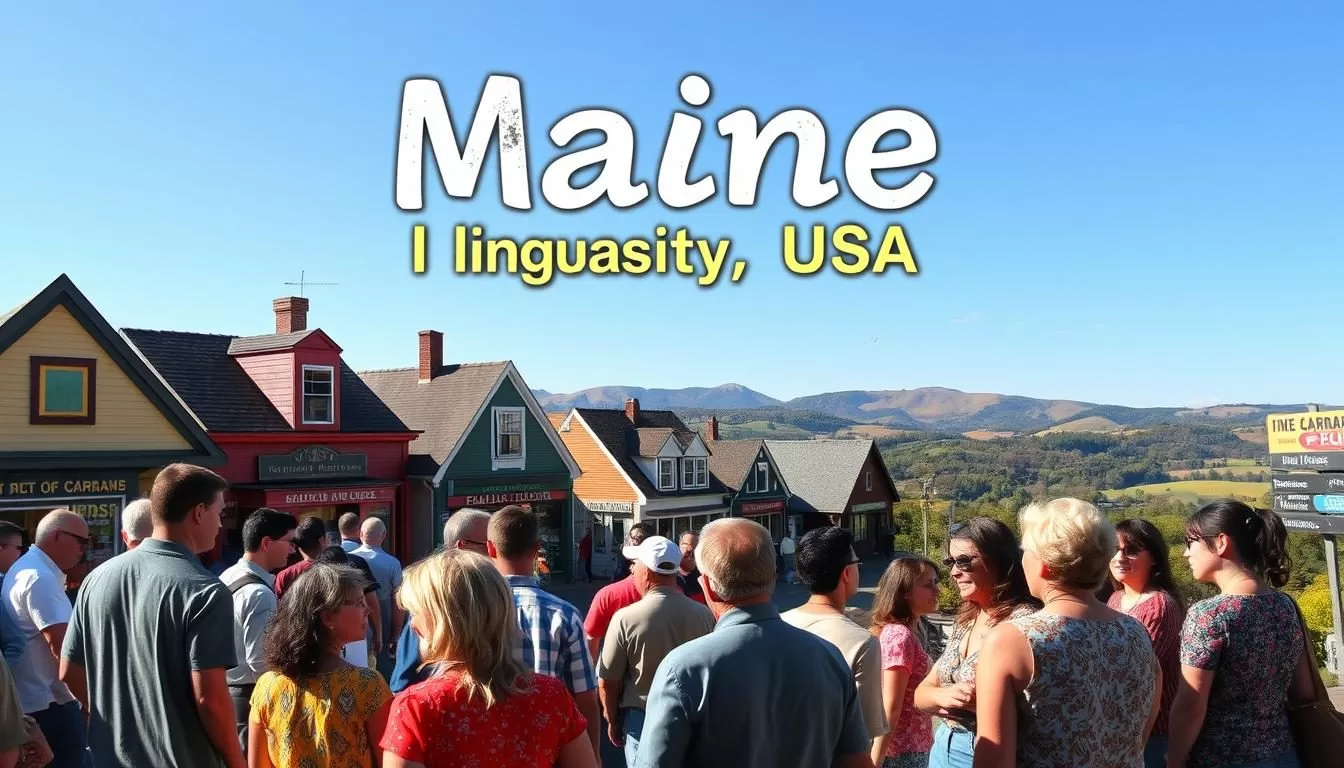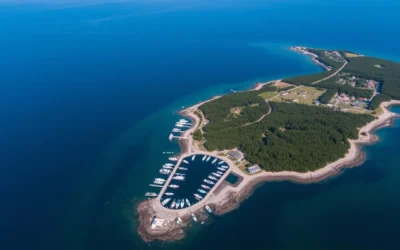✓ Accommodations✓ Flights✓ Rental Cars
Have you ever wondered about the diverse language scene in Maine? This northeastern area is home to a unique blend of cultures and histories, reflected in its linguistic heritage. While English is the most common language, spoken by 92.91% of the population, other languages like French and various immigrant tongues add depth to the community.
Interestingly, this state does not have an official language, making it stand out in the nation. This openness has allowed a variety of languages to thrive, shaped by historical influences and immigrant groups. Understanding this diversity is key to appreciating the cultural richness of the area.
As you dive deeper into this article, you’ll discover how translations, cultural impacts, and community needs play a role in shaping the language landscape. Let’s explore this fascinating topic together!
Overview of Maine’s Language Scene
Exploring the language scene in this region reveals a fascinating mix of cultures. English dominates as the primary spoken language, used by approximately 94% of households. This reflects the country’s broader trends, where English remains the most common form of communication.
However, the linguistic landscape here is far from one-dimensional. Many households also use other languages in daily discourse. For instance, about 6% of homes speak diverse tongues, adding richness to the community. This multilingual presence is a result of historical influences and modern immigration patterns.

Understanding the Primary Language Landscape
English’s dominance in this region is clear, but it’s essential to recognize the role of other languages. For example, French has a strong historical presence, while Spanish and Chinese are increasingly spoken today. These trends highlight the dynamic nature of the area’s language state.
Current Multilingual Statistics in Maine
Recent data shows that multilingual households are on the rise. About 20.7% of the nation’s population speaks a language other than English at home. While this percentage is lower here, it still underscores the need for translation services and cultural understanding.
Understanding these statistics is crucial for community and business planning. It helps local services cater to diverse needs, ensuring everyone feels included. This region’s unique language scene sets it apart from other parts of the country, making it a fascinating area to study and explore.
Maine, United States: Official and widely spoken languages
The way people communicate here tells a story of history and diversity. While many assume that an official language is legally recognized, this area stands out by not designating one. Instead, the language scene is shaped by its community and historical influences.
What does “official” versus “widely spoken” mean? An official language is one recognized by law for government and public use. In contrast, widely spoken languages are those used daily by the population, regardless of legal status. Here, English dominates as the primary language spoken, used by over 92% of residents.

French holds a significant place due to historical ties, while other languages like Spanish and Chinese are growing. These trends reflect the area’s evolving immigrant communities. For example, many families use their native tongues at home, blending traditions with modern life.
This linguistic diversity impacts local education, media, and public services. Schools often offer translation support, and media outlets cater to multilingual audiences. Understanding these dynamics helps the community thrive and stay connected.
As you explore further, you’ll uncover how specific languages and cultures have shaped this unique area. Stay tuned for more insights in the next sections!
Historical and Cultural Influences on Maine’s Languages
The history of language in this area is a story of migration and cultural exchange. From early settlers to modern immigrants, the language landscape has been shaped by centuries of settlement and adaptation. This rich tapestry reflects the diverse roots of the community.

Immigrant Contributions and Settlement History
Early European settlers played a significant role in shaping the language state. French settlers from Nova Scotia and Cajuns from Louisiana brought their dialects, while Irish and Scotch-Irish immigrants added their linguistic flavors. These groups laid the foundation for the region’s multilingual identity.
Over the past century, immigrant contributions have enriched the linguistic tapestry. For example, by 1924, approximately 1.5 million people spoke French in New England, making up about one-fifth of the population. This historical influx continues to influence everyday language use today.
Influence of Early European and Native Populations
Native American languages also hold a significant place in this region’s history. Tribes like the Passamaquoddy and Maliseet have preserved their linguistic heritage, adding depth to the community. Their enduring cultural presence highlights the importance of preserving indigenous tongues.
Early European settlers, particularly the French, left a lasting mark. By the late 19th century, over 250 French newspapers were published in New England, reflecting the need for translation and cultural integration. These historical influences continue to shape the language state of the area.
Understanding these dynamics helps us appreciate the region’s unique linguistic heritage. From early settlers to modern immigrants, each group has contributed to the rich language landscape we see today.
Top Non-English Languages in Maine
The linguistic tapestry of this region is woven with threads of history and culture. While English remains the primary language, other tongues add depth to the community. French, Spanish, and Chinese are among the most prominent, each with unique cultural roots and growing influence.
French Dominance and Its Cultural Roots
French holds a special place here, with over 33,000 speakers. This dominance stems from historical ties, particularly the migration of French settlers in the 19th century. Today, it remains a vital part of the community, shaping local traditions and identity.
Highlights of Spanish, Chinese, and Other Languages
Spanish is the second most common spoken language, reflecting the growing immigrant population. Chinese follows closely, with its speakers contributing to the region’s diversity. Other languages like Vietnamese and Arabic also play a role, enriching the cultural landscape.
These languages are not just spoken at home but also influence local businesses, schools, and public services. As the non-English speaking population grows, the need for translation services becomes more critical. This ensures everyone can access essential resources and feel included in the community.
For more insights into the linguistic diversity of this region, explore this detailed guide. Additionally, you can find specific statistics on the top non-English languages in this comprehensive report.
Community Impact of Language Diversity in Maine
Language diversity shapes the way communities connect and grow. When people speak multiple languages, it fosters understanding and strengthens social bonds. This is especially true in areas where immigrant populations are on the rise.
Everyday communication becomes richer when diverse language skills are present. For example, businesses and schools adapt to serve multilingual families, ensuring everyone feels included. This adaptability is key to building a cohesive community.
Cultural Integration Through Multilingualism
Multilingualism plays a vital role in cultural integration. When people understand each other’s language, it bridges gaps and fosters mutual respect. This is evident in local schools, where students from diverse backgrounds learn together.
For instance, Westbrook High School has students speaking eighteen different languages, representing twenty-seven birth countries. This diversity enriches the learning environment and prepares students for a globalized world.
Economic and Social Benefits
Language diversity also brings economic advantages. Businesses that cater to multilingual customers often see increased growth. For example, Dolgormaa’s House of Languages supports local economies by providing services in thirty languages.
Socially, multilingualism strengthens the community fabric. It ensures that everyone, regardless of their language spoken at home, can access essential services like healthcare and education.
| Benefit | Example |
|---|---|
| Cultural Integration | Westbrook High School’s multilingual student body |
| Economic Growth | Dolgormaa’s House of Languages supporting local businesses |
| Social Inclusion | Translation services in healthcare and education |
To learn more about how language access initiatives are transforming communities, visit this detailed resource. Additionally, explore the patterns of language diversity in this insightful study.
Language Services and Interpretation in Maine
Effective communication is the backbone of any thriving community, and professional language services play a vital role in achieving this. With a diverse population, the need for reliable interpretation and translation solutions has never been greater. These services ensure that everyone, regardless of their spoken language, can access essential resources and participate fully in society.
Professional Interpretation and Translation Solutions
Professional language services cover over 200 languages, catering to the unique needs of the community. Whether it’s healthcare, legal, or technical documents, these services bridge communication gaps effectively. For example, Interpreters Unlimited™ offers on-site, over-the-phone, and video remote interpretation, ensuring accessibility for all.
Specialized sectors like healthcare and legal rely heavily on these services. Courts provide telephonic interpretation at clerk counters and maintain a list of qualified interpreters for proceedings. This ensures that Limited English Proficient (LEP) individuals can navigate the legal system without barriers.
How Language Services Enhance Community Integration
Language services are more than just tools; they are lifelines for many. Schools, businesses, and public institutions use these services to foster inclusivity. For instance, families have the right to receive education in a language they understand, supported by legal requirements for free interpretation and translation.
- On-site interpretation for face-to-face communication.
- Telephone and video remote interpretation for immediate needs.
- Specialized translation for legal, medical, and technical documents.
These services not only break down barriers but also strengthen the fabric of the community. By ensuring everyone can communicate effectively, they promote understanding and unity in an increasingly diverse world.
If you’re looking to address language needs in your business or community, professional services are the way to go. They provide the expertise and reliability needed to make communication seamless and inclusive.
Conclusion
Embracing the rich language diversity of this region is key to fostering a stronger community. From historical roots to modern influences, the blend of cultures and tongues creates a vibrant tapestry. Understanding both dominant and non-English languages helps bridge gaps and build connections.
Professional translation services play a crucial role in ensuring inclusivity. They support education, healthcare, and business, making resources accessible to all. This integration strengthens the community and promotes unity.
Take the time to explore more about this unique linguistic landscape. Dive into the resources provided to gain deeper insights. Celebrate the diversity that makes this country a place of cultural richness and shared understanding.
Let’s continue to value and support multilingualism as a strength. Together, we can create a more inclusive and connected community.
The above is subject to change.
Check back often to TRAVEL.COM for the latest travel tips and deals.






